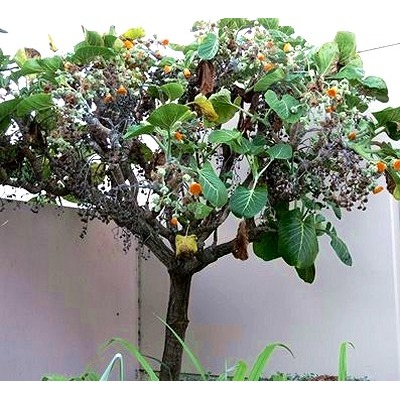Cabbage Tree
Growing tips Getting started -- Start your plant in a pot about twice as wide as the one it's in, which can hold it for a few months. For soil, use a well draining
mix. A typical mix is 2 parts quality potting soil After repotting, give no liquid fertilizer or strong sun the first 2 weeks. After that, increase the sun gradually over the course of several weeks. Older plants like partly-sunny conditions, with some protection from strong afternoon sun. It can handle full sun in cool, coastal areas. Watering -- Keep the soil evenly moist most of the time. Don't let it dry out completely, but avoid keeping it constantly saturated. The first month after repotting, ensure that the original soil ball stays moist, not just the surrounding soil. Climate -- It comes from a cool climate, so it's happiest in mild temperatures, with nights that are cool. I don't know if it will thrive if temperatures regularly get above about 85 degrees F (30 degrees C) and nights are warm (above 65°F / 18°C). To keep the roots cool in hotter conditions, keep the pot shaded, perhaps by placing it inside a second pot made of clay, filling any extra space with soil. It can probably survive a few degrees of frost, but i recommend protecting it from freezing temperatures. Try to keep it above 45°F (7°C) the first winter. Fertilizer -- It has average fertilizer needs. Feed about every 2-3 months with an all-purpose fertilizer that contains micronutrients. Follow the dosage on the package. Pests -- Powdery mildew might grow on the leaves in some climates. Wipe if off quickly if it appears. If it persists, try treating it with horticultural oil. Contact me if you need more recommendations. Watch for any pests that can affect your other plants. Slugs & snails like young plants. Rodents like the stem and leaves. This species may develop some purple or brown spots on the leaves when conditions aren't ideal. It's not necessarily cause for worry when you see them, but try to identify the cause - usually dry roots, under-potting, or hot temperatures. General info on this plant is here. If you have questions, feel free to contact me. Have fun growing it! - Jeff Strange Wonderful Things
|
|||||||||


